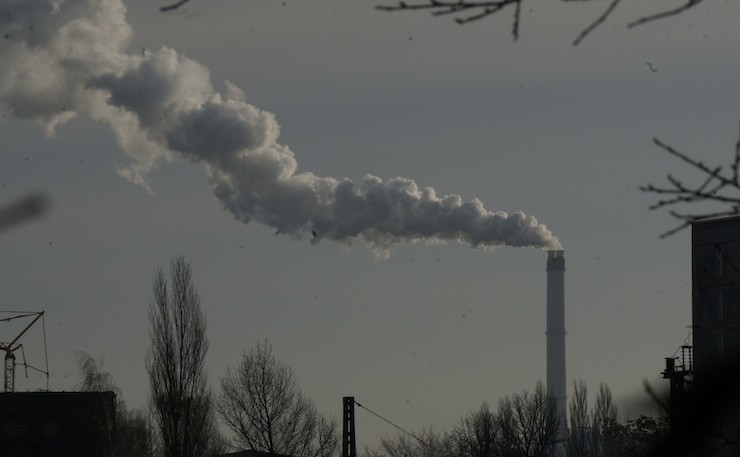OPINION: The market won’t save coal workers, but government intervention can ensure they’re not left high and dry as our economy changes with the climate, writes Hannah Aulby.
It’s a long way from Paris to the Latrobe Valley, but French company Engie’s statement that it is considering closing Hazelwood power station demonstrates the urgency of planning for a phased closure of power stations in Australia.
Decisions made on the other side of the world can have major implications for local workers and communities, as well as for Australia’s overall carbon pollution levels.
Engie chief executive Isabelle Kocher last week told a senate committee in Paris that: “For the Hazelwood plant we are studying all possible scenarios, including closure,” adding that closure or sale of its coal power stations was in line with its strategy to exit fossil fuels.
In Australia, Hazelwood is well known as one of the dirtiest power stations in the world. It’s an international embarrassment that despite the highfalutin rhetoric of our federal political leaders such a dinosaur can still be operating in Australia in 2016.
In fact, Victoria’s coal burning power stations pollute 55 million tonnes of greenhouse gas emissions every year, which constitutes 50 per cent of Victoria’s and 10 per cent of Australia’s total net emissions. The government’s lack of serious climate policy means that decisions on the fate of the Hazelwood power station are being left to company executives on the other side of the world.
Right now, Australia is presented with a stark choice, one it seems no government wants to confront. Either we do nothing and deal with ad hoc closures as companies move away from fossil fuels, or we take responsibility and plan for a phased closure of all our power stations, including mine and power station rehabilitation, and transition plans for workers.
The recent closures of the Leigh Creek min in South Australia showed the risks of leaving these decisions to a company whose interests lie in their profits and return to shareholders.
Unplanned closures can have a devastating impact on the local community. Alinta, the company operating the mine, also closed Playford and Northern power stations earlier this month, giving workers and the community less than a year’s notice. There was no plan in place for what would happen next, and no chance for the community to diversify their economy.
We know that more closures are going to happen.
At present we have too much power in the grid and a responsibility to close power stations in line with the climate targets we agreed to at Paris last November. In 2014, the Australian Energy Market Operator reported that there was about 9000 megawatts of excess power in the national electricity market and in January this year estimated that 40 per cent of Victoria’s coal-fired generation would need to close in order to meet the Turnbull government’s weak climate targets.
In addition, no new renewables will be built unless this extra capacity is phased out. With stronger climate targets needed, and an accelerating move to renewables internationally, the closures we are already witnessing today may start happening faster than expected.
Given this rapidly unfolding reality, the Federal and Victorian governments should set out a clear plan for the phased closure of coal-fired power plants that includes a just transition for workers and the rehabilitation of mine and power station sites.
If it is managed well, this transition could create a boom in renewables nationally, a modernised national economy with investor certainty, stronger local communities, reenergised and diversified local economies and, above all, a safe climate.
Recent polling conducted by ReachTel for the Australian Conservation Foundation and other environment groups found that most voters would be more likely to vote for a party that has a plan to phase out coal-fired power stations, and 84.2 per cent of Australians think the next federal government must do more to address global warming.
As these recent and likely imminent closures demonstrate, the world is moving away from coal. Australia’s tired national electricity market will slowly break as coal closes and renewables come online. We can either do this right now or leave it up to the markets to decide in an ad hoc manner, meaning communities will suffer and economies both nationally and locally will stall.
Currently, Australian governments at both the state and federal level are still in catatonic denial believing that they can sit back and do nothing and let the market figure it out. Yet we are in urgent need of national leadership to call this for what it is – irresponsible mismanagement that will hurt the climate, local communities and the economy.
A national energy transition plan will create opportunities for our economy and ensure local communities emerge stronger. We need a phased closure of our coal burning power stations, including mine rehabilitation and transitions for local communities. Governments must take the lead and plan for a 21st century economy beyond coal.
Donate To New Matilda
New Matilda is a small, independent media outlet. We survive through reader contributions, and never losing a lawsuit. If you got something from this article, giving something back helps us to continue speaking truth to power. Every little bit counts.





